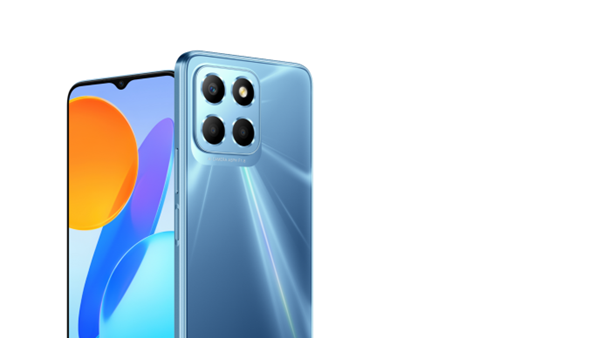
Front
cameras on smartphones have evolved far beyond their initial role in capturing
selfies. Modern smartphone manufacturers are investing in innovative front
camera technologies to enhance the overall user experience, from advanced
facial recognition to AI-driven enhancements. This article explores the
multifaceted innovations in front-facing cameras, demonstrating how these
advancements go beyond the realm of selfies.
High-Resolution
Sensors: Sharpening the Selfie Game
The
evolution of front-facing cameras begins with the integration of
high-resolution sensors. While early front cameras were primarily designed for
basic photography needs, contemporary smartphones feature front sensors with
resolutions comparable to their rear counterparts. This upgrade allows users to
capture sharp and detailed selfies, group photos, and even participate in
high-quality video calls, emphasizing the importance of front camera quality in
modern devices.
Wide-Angle Lenses:
Group Selfies and More
To
accommodate the growing trend of group selfies or "groufies,"
manufacturers have introduced wide-angle lenses on front cameras. These lenses
expand the field of view, enabling users to capture more people or include a
broader background in their shots. The wide-angle front camera has become a
valuable tool for social gatherings, travel, and any scenario where a broader
perspective is desired.
Depth Sensors and
Portrait Mode: Artistry in Selfies
Front
cameras are now equipped with depth sensors, allowing users to capture selfies
with a professional touch like HONOR X8 5G phone. Portrait mode, driven by
artificial intelligence (AI) algorithms and depth-sensing technology, creates a
bokeh effect by blurring the background, emphasizing the subject. This feature
adds a level of artistry to front camera photography, producing selfies that
rival the quality of portraits taken with rear cameras.
Night Mode for Front
Cameras: Illuminating Selfies in Low Light
The
challenge of capturing clear and vibrant selfies in low-light conditions has
been addressed with the introduction of Night Mode for front cameras. This
feature employs advanced image processing algorithms to enhance the brightness,
reduce noise, and optimize overall image quality in low-light environments.
Night Mode on front cameras ensures that users can capture memorable moments
regardless of the lighting conditions.
AI Beauty Mode:
Enhancing Selfies in Real-Time
AI-driven
beauty modes have become a staple in front camera innovations. These modes
leverage artificial intelligence to recognize facial features and apply
real-time enhancements to skin tone, complexion, and even features like eyes
and lips. The result is a polished and flattering selfie that caters to
individual preferences. Users can adjust the intensity of these enhancements,
striking a balance between natural and enhanced aesthetics.
Facial Recognition
Technology: Beyond Selfie Authentication
Front
cameras have taken on a critical role in smartphone security through facial
recognition technology. This innovation goes beyond capturing selfies; it
serves as a secure and convenient method for unlocking devices. Advanced facial
recognition systems use depth-sensing and infrared technologies to create a 3D
map of the user's face, enhancing security and accuracy. Front cameras have
become the key to unlocking the potential of smartphones securely and
effortlessly.
Gesture Control: Beyond
the Touch
Gesture
control is another innovative feature empowered by front cameras. Users can
navigate through their devices, take selfies, or control certain applications
using hand gestures. This hands-free interaction with the device adds a layer
of convenience, especially in scenarios where touching the screen may not be
practical, such as when cooking or exercising.
Dual Front Cameras:
Depth and Versatility
To further
enhance the capabilities of front-facing cameras, some smartphones now
incorporate dual front camera setups. This configuration often includes a
primary high-resolution sensor paired with a secondary depth-sensing or
wide-angle lens. Dual front cameras provide users with added versatility,
enabling advanced features like enhanced depth perception, improved portrait
mode effects, and a broader range of creative possibilities.
AR (Augmented Reality)
Selfies: Blurring Reality and Fantasy
Front
cameras are increasingly being integrated into augmented reality experiences.
AR selfies allow users to overlay virtual elements, such as filters, stickers,
and effects, onto their real-time selfies. This combination of real-world
imagery and virtual enhancements adds a playful and creative dimension to front
camera photography, transforming ordinary selfies into interactive and
entertaining expressions of individuality.
Conclusion: Front
Cameras Redefined
In
conclusion, the evolution of front-facing cameras in modern smartphones goes
far beyond the realm of selfies. From high-resolution sensors and wide-angle
lenses to depth-sensing technology and AI-driven enhancements, front cameras
have become versatile tools that contribute to a myriad of user experiences.
Whether capturing group moments, experimenting with AR selfies, or ensuring
secure facial recognition, front cameras play a pivotal role in shaping how
users interact with and personalize their smartphone photography.
